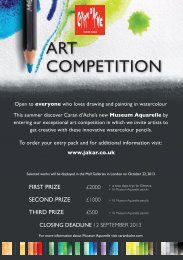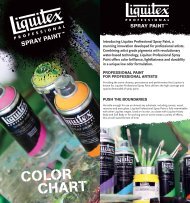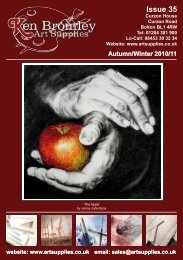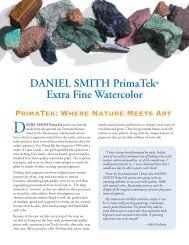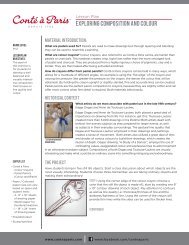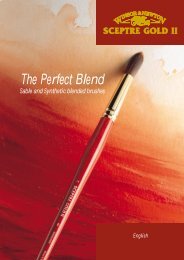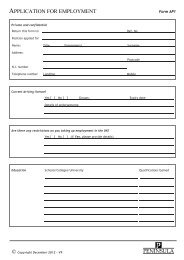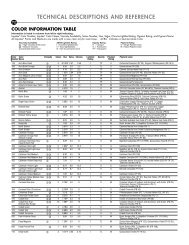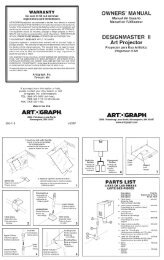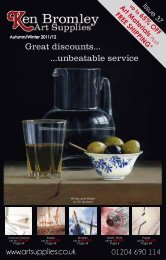Series 14 Finest artists' water-colours
Series 14 Finest artists' water-colours
Series 14 Finest artists' water-colours
Create successful ePaper yourself
Turn your PDF publications into a flip-book with our unique Google optimized e-Paper software.
HORADAM ® AQUARELL – symbols and testingTo inform you in the best possible way about Schmincke HORADAM ® artists’ <strong>water</strong>-<strong>colours</strong>we use individual descriptions and also different symbols: ( H ).Some remarks in this framework:Color Index and Pigment namesThe Color Index system is an international standard to denominate dyes and pigments. Inthe C.I. a combination of letters and numbers indicate the colour category (C.I.-Name) i.e.PO 20 means Pigment Orange 20.The groups of Color Index names are:PW= Pigment white PB = Pigment bluePY = Pigment yellow PG = Pigment greenPO = Pigment orange PBr = Pigment brownPR = Pigment red PBk = Pigment blackPV = Pigment violetOpacity and glazing propertiesThe opacity of a pigmented colour is not only depending on the thickness of the colourapplication but also on the distribution and size of the pigments as well as the height of therefractive index of the applied colour.All <strong>colours</strong> have been submitted to the same testing method: standardized application onblack and white striped saturated base as well as on white 200 g <strong>water</strong>-colour paper. Thisallows a classification with the following 4 symbols:transparent semi-opaquesemi-transparent opaqueLightfastnessThis describes the durability of a colour in daylight. The lightfastness therefore is not onlyreferring to the pigment, but always to the total system – pigment, binding medium, additives.A number of influencing factors play a role too, like intensity of sunlight, temperature,moisture, oxygen or gas content of the air. The importance and combination of the variousinfluencing factors vary depending on daytime and season as well as on geographic factors.In connection with the textile industry we use as an objective scale the so called blue woolscale. This testing method consists of 8 wool stripes tinted with different lightfast dyes. Thelightfastness is expressed in numbers. 1 means very low, 8 is the highest lightfastness accordingto the measurable changes of the 8 wool stripes in a given time. We translate those findingsinto our 5-star system. This allows a more precise differentiation especially in the morelightfast categories than with the usual 3 or 4 steps used by other producers.Blue wool scale Stars8 H H H H H extremely lightfast7 H H H H good lightfastness5 + 6 H H H lightfast4 H H limited lightfastness3 H less lightfast1 + 2 – not lightfastLightfast colour systems require very long testing periods under naturallight. For the testing of pigmented colour systems we therefore also use intensive exposureinstruments to speed up this process. This does not only allow faster classification,but also permits to obtain reproducible results independent of location, climate and time.Such testing instruments contain Xenon light, which are adapted to daylight by using filters.Longterm exposure on the roof represents additional testing.Staining and Non-StainingWater-<strong>colours</strong> applied to paper behave differently in respect to their adhesive power to thepaper. Some <strong>colours</strong> may be washed off with a moist brush or cloth, others stick (“stain”)more or less strongly to paper. To test the grade of staining identified with our 3 symbolsbelow we have applied <strong>water</strong>-colour to 160 g paper and tried to rub it off after 24 hours ofdrying with a dry cloth after washing it with a wet brush.The result is classified in 3 categories:non-stainingsemi-stainingstaining4



